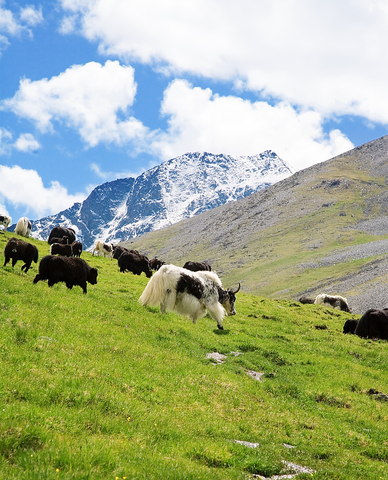
Natural Home Cures Himalayan Crystal Salt Mountains Climate
T he Himalayan climate varies according to altitude. It gets colder as the altitude increases and gets wet as the altitude drops. The climate ranges from tropical at the foot of the mountains to eternal ice and snow at the highest elevations. The amount of annual rainfall increases from west to east along the front of the range. The temperature and climate in the region change very quickly. These erratic climate conditions make the region quite unpredictable and dangerous.
There are two major seasons in the region - winter and summer. During winter, the region receives maximum snow with sub-zero temperatures, however, summer is quite mild - perfect for summer holiday getaways.
The flora and fauna of the Himalayas vary with climate, elevation, rainfall, and soil. Himalayan vegetation can be classified into four broad categories - tropical, subtropical, temperate, and alpine. The tropical evergreen rainforest is restricted to the humid foothills of the central and the eastern Himalayas. In the Middle Himalayas, at elevations between 1,520 and 3,660 meters, the vegetation consists of several species of oak, pine, poplar, rhododendron, larch and walnut.
Below the timberline, the Himalayas contain forests of cypress, spruce, fir, birch and juniper. Alpine vegetation abounds in the higher areas of the Himalayas just below the snow line and includes shrubs, rhododendrons, mosses, lichens, and wildflowers such as edelweiss and blue poppies.The highland people use these areas for grazing during summer.
Animals such as tigers, leopards, rhinoceroses, antelopes and a variety of deer inhabit the forested areas of the Tari plain and the Sub-Himalayan foothills. Above the tree line, the most common animals are diverse types of insects, spiders, and mites - the only species that can survive as high up as 20,700 feet. Fish of the genus Glyptothorax live in most of the Himalayan streams and the Himalayan water shrew inhabits stream banks. The butterflies found in the Himalayas vary extensively, especially those belonging to the genus Troides.
The avian life is equally rich but is more abundant in the east than in the west. In Nepal alone, an estimated 800 species have been observed so far. Among the common Himalayan birds are various species of choughs, magpies, redstarts, titmice and whistling thrushes. Other varieties such as the lammergeier, the black-eared kite, and the Himalayan griffon can also be seen. However, as a result, of deforestation, the habitat of most of the wildlife has been devastated. They are now confined to specially protected areas such as the Kaziranga and Jaldapara sanctuaries in India and the Chitawan preserve in Nepal.
The geographic variation is stunning and among the snowcapped mountains, you can find jungles and green vegetation landscapes, however, be cautious as the weather changes very quickly and the region is prone to prone to monsoons, floods, snowstorms, landslides, earthquakes, tremors and high winds.
